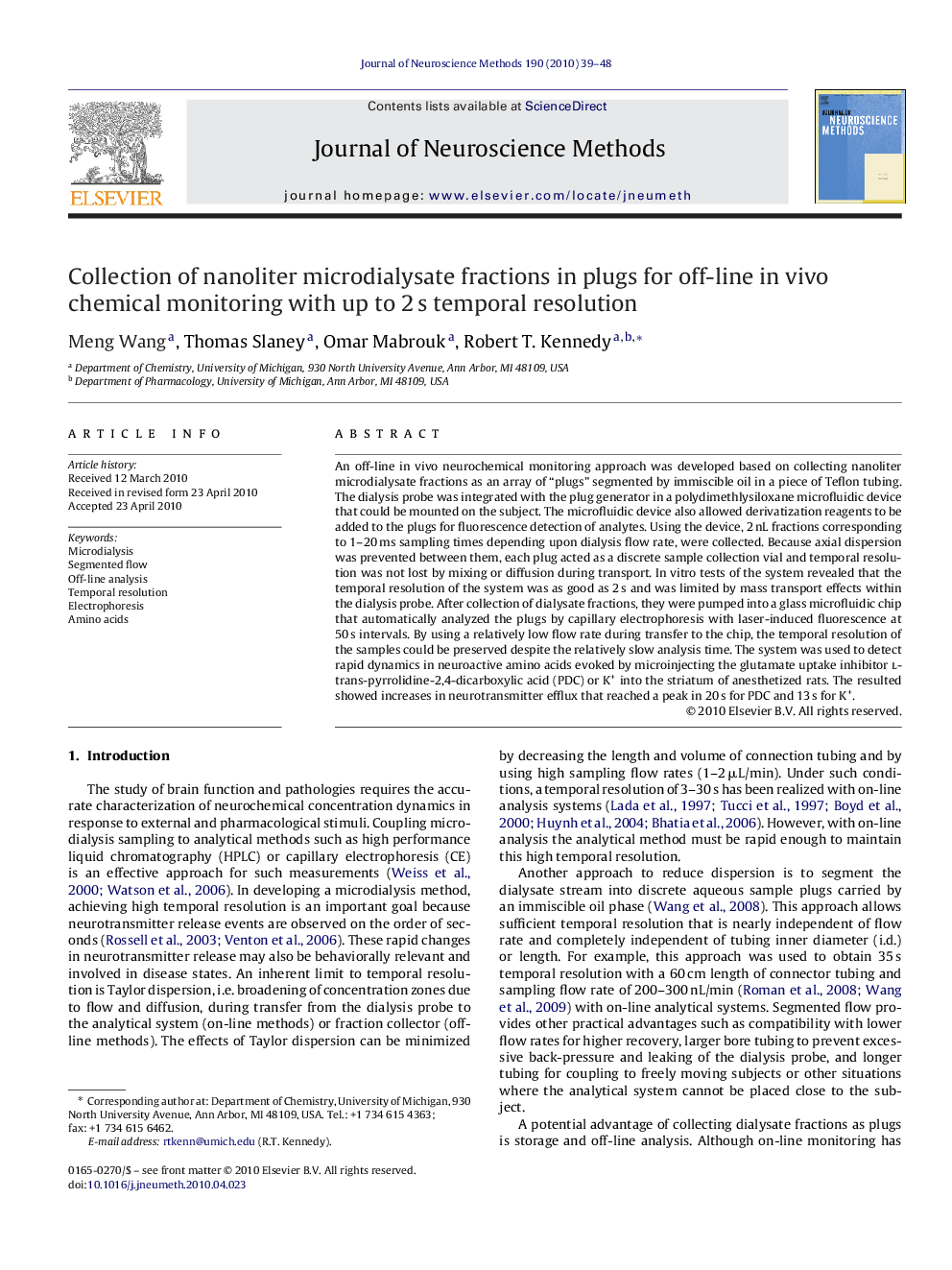| Article ID | Journal | Published Year | Pages | File Type |
|---|---|---|---|---|
| 6269972 | Journal of Neuroscience Methods | 2010 | 10 Pages |
An off-line in vivo neurochemical monitoring approach was developed based on collecting nanoliter microdialysate fractions as an array of “plugs” segmented by immiscible oil in a piece of Teflon tubing. The dialysis probe was integrated with the plug generator in a polydimethlysiloxane microfluidic device that could be mounted on the subject. The microfluidic device also allowed derivatization reagents to be added to the plugs for fluorescence detection of analytes. Using the device, 2Â nL fractions corresponding to 1-20Â ms sampling times depending upon dialysis flow rate, were collected. Because axial dispersion was prevented between them, each plug acted as a discrete sample collection vial and temporal resolution was not lost by mixing or diffusion during transport. In vitro tests of the system revealed that the temporal resolution of the system was as good as 2Â s and was limited by mass transport effects within the dialysis probe. After collection of dialysate fractions, they were pumped into a glass microfluidic chip that automatically analyzed the plugs by capillary electrophoresis with laser-induced fluorescence at 50Â s intervals. By using a relatively low flow rate during transfer to the chip, the temporal resolution of the samples could be preserved despite the relatively slow analysis time. The system was used to detect rapid dynamics in neuroactive amino acids evoked by microinjecting the glutamate uptake inhibitor l-trans-pyrrolidine-2,4-dicarboxylic acid (PDC) or K+ into the striatum of anesthetized rats. The resulted showed increases in neurotransmitter efflux that reached a peak in 20Â s for PDC and 13Â s for K+.
